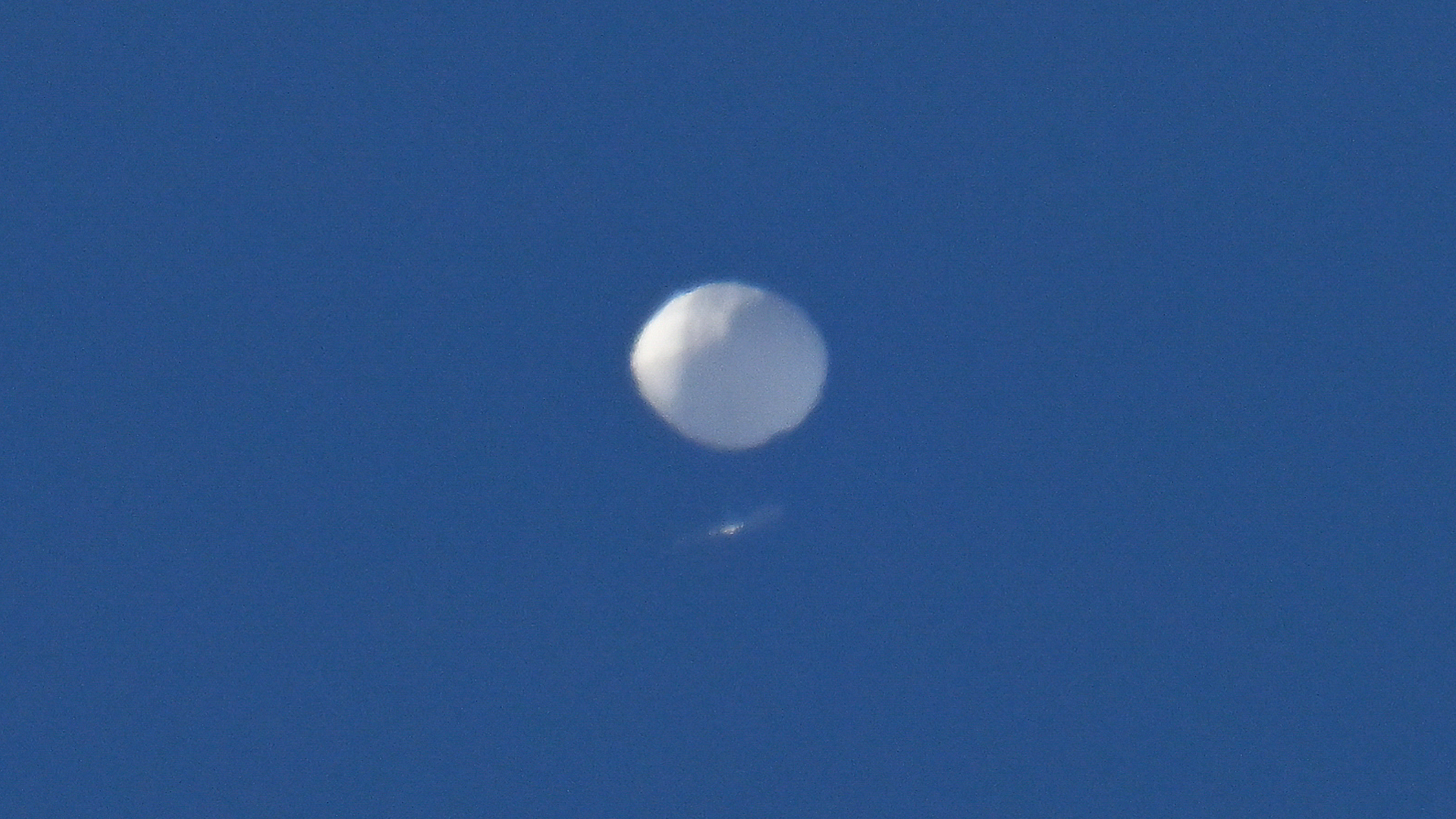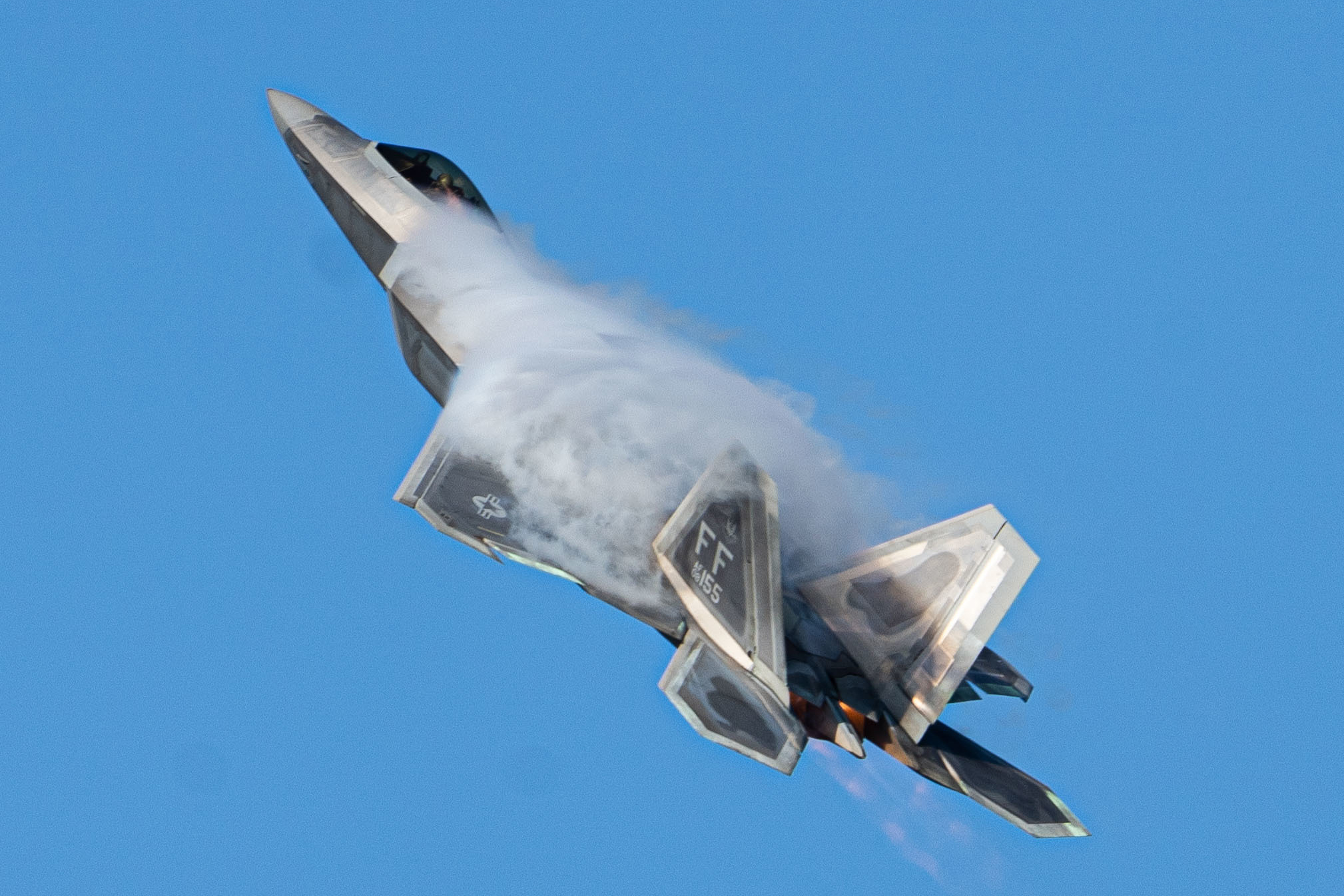
The Chinese spy balloon is no more.
An F-22 fighter jet destroyed the Chinese balloon on Saturday (Feb. 4) with a Sidewinder missile, taking it out with a single shot, U.S. military officials said.
The uncrewed airship was over the Atlantic Ocean at the time, just off the coast of South Carolina. It was flying at an altitude of 60,000 feet to 65,000 feet (18,300 to 19,800 meters), while the F-22 was at about 58,000 feet (17,700 m), the U.S. Department of Defense (DOD) wrote in an update on Saturday. For perspective: Commercial airliners fly at an average altitude of about 35,000 feet (10,700 m).
Related: Chinese surveillance balloon in US airspace causes international stir
Just shot at it! View from my house in Myrtle. pic.twitter.com/85EZ3EDbYqFebruary 4, 2023

The U.S. military first detected the balloon on Jan. 28, when it entered national airspace near Alaska's Aleutian islands, the DOD update said. The airship cruised from Alaska into Canada, crossed back into the United States over Idaho, then continued moving southeast over the country's heartland.
On Wednesday (Feb. 1), President Joe Biden ordered the military to take out the balloon as soon as this action could be taken safely, without putting anyone on the ground in danger, according to the DOD update. That opportunity came on Saturday, when the airship left terra firma behind over the Palmetto State.
The remains of the airship fell about 6 miles (10 kilometers) off the South Carolina coast, into water about 47 feet (14 m) deep. The shallow water should allow recovery of at least some debris, analysis of which could reveal details of China's surveillance technology, military officials said.
Get the Space.com Newsletter
Breaking space news, the latest updates on rocket launches, skywatching events and more!
"I would also note that while we took all necessary steps to protect against the PRC surveillance balloon's collection of sensitive information, the surveillance balloon's overflight of U.S. territory was of intelligence value to us," an unnamed senior defense official said in the DOD update. (PRC stands for "People's Republic of China.")
"I can't go into more detail, but we were able to study and scrutinize the balloon and its equipment [in flight], which has been valuable," the official added.
Chinese officials have apologized for the incursion of the airship, which consisted of a solar-panel-equipped truss suspended beneath a big white balloon. They've also claimed that it was an innocuous weather-studying craft that strayed into U.S. airspace accidentally, at the mercy of the winds. But the unnamed DOD official isn't buying it.
"This was a PRC surveillance balloon," the official said. "This surveillance balloon purposely traversed the United States and Canada, and we are confident it was seeking to monitor sensitive military sites."
The official also said that Chinese balloons flew over parts of the continental U.S. at least three times during the administration of Biden's predecessor as president, Donald Trump.
Mike Wall is the author of "Out There" (Grand Central Publishing, 2018; illustrated by Karl Tate), a book about the search for alien life. Follow him on Twitter @michaeldwall. Follow us @Spacedotcom, or on Facebook and Instagram.
Join our Space Forums to keep talking space on the latest missions, night sky and more! And if you have a news tip, correction or comment, let us know at: community@space.com.

Michael Wall is a Senior Space Writer with Space.com and joined the team in 2010. He primarily covers exoplanets, spaceflight and military space, but has been known to dabble in the space art beat. His book about the search for alien life, "Out There," was published on Nov. 13, 2018. Before becoming a science writer, Michael worked as a herpetologist and wildlife biologist. He has a Ph.D. in evolutionary biology from the University of Sydney, Australia, a bachelor's degree from the University of Arizona, and a graduate certificate in science writing from the University of California, Santa Cruz. To find out what his latest project is, you can follow Michael on Twitter.









